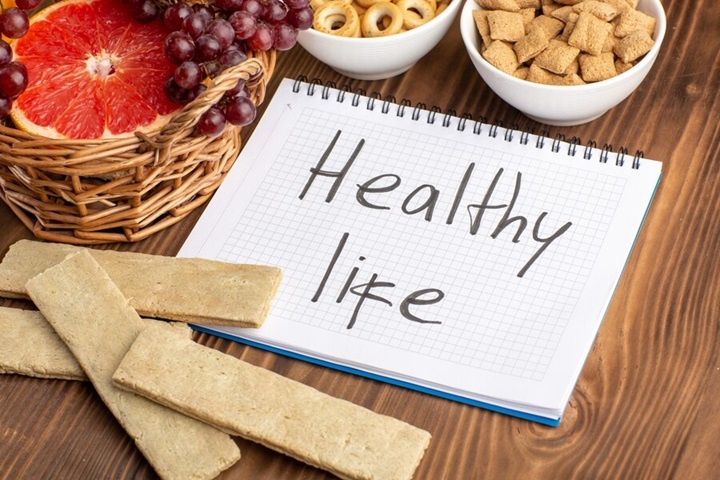Vitamin E is a vital nutrient celebrated for its antioxidant properties and its significant role in maintaining overall health. Found naturally in various foods and available as a dietary supplement, this fat-soluble vitamin helps protect cells from damage, boosts immunity, and supports various bodily functions. This comprehensive guide delves into the health benefits, nutritional sources, and practical tips for incorporating vitamin E into your daily diet.
Table of Contents
Understanding Vitamin E
Vitamin E refers to a group of eight fat-soluble compounds divided into two categories: tocopherols and tocotrienols. Each category includes alpha, beta, gamma, and delta forms, with alpha-tocopherol being the most biologically active in humans.
Why Vitamin E is Important
Vitamin E’s antioxidant properties combat oxidative stress caused by free radicals, which can damage cells and contribute to chronic diseases. This nutrient is essential for immune function, skin health, and the prevention of certain conditions like cardiovascular disease and cognitive decline.
The Health Benefits of Vitamin E
2.1 Cardiovascular Health
Vitamin E prevents the oxidation of LDL cholesterol, which helps reduce the risk of plaque formation in arteries. Regular intake can promote heart health and lower the chances of developing cardiovascular diseases.
2.2 Skin Health and Anti-Aging
Vitamin E is widely recognized for its skin benefits. It helps reduce signs of aging, promotes wound healing, and protects the skin from UV damage. Many skincare products include vitamin E for its hydrating and restorative properties.
2.3 Eye Health
This nutrient plays a crucial role in maintaining good vision. Studies suggest that vitamin E may reduce the risk of age-related macular degeneration (AMD) and cataracts by protecting the eyes from oxidative stress.
2.4 Cognitive Function
Vitamin E has neuroprotective properties that may slow cognitive decline in aging populations. It supports brain health by reducing oxidative stress in neural tissues.
2.5 Cancer Prevention
Some research indicates that vitamin E may help protect against certain types of cancers by inhibiting the proliferation of cancer cells.
2.6 Liver Health
Vitamin E is known to benefit the liver by reducing inflammation and oxidative damage. It has been studied for its role in managing nonalcoholic fatty liver disease (NAFLD).
Best Nutritional Sources of Vitamin E

Incorporating vitamin E-rich foods into your diet is essential for maintaining adequate levels. Below are some top sources:
| Category | Examples |
|---|---|
| Nuts and Seeds | Almonds, sunflower seeds, hazelnuts, peanuts |
| Vegetable Oils | Wheat germ oil, sunflower oil, safflower oil, olive oil |
| Fruits | Avocados, mangoes, and kiwi |
| Green Vegetables | Spinach, broccoli, kale |
| Fortified Foods | Breakfast cereals, margarine, and fruit juices enriched with vitamin E |
How Much Vitamin E Do You Need?
The recommended dietary allowance (RDA) for vitamin E varies by age, gender, and life stage:
| Age Group | RDA (mg/day) |
|---|---|
| Infants (0-6 months) | 4 |
| Children (1-3 years) | 6 |
| Adults (14 years and older) | 15 |
| Pregnant Women | 15 |
| Lactating Women | 19 |
For optimal health, aim to meet these recommendations primarily through food rather than supplements.
Symptoms of Vitamin E Deficiency
Vitamin E deficiency is rare but can occur due to genetic disorders, fat malabsorption syndromes, or very low-fat diets. Common symptoms include:
- Muscle weakness
- Poor coordination
- Vision problems
- Weakened immune response
Risks of Overconsumption
While vitamin E toxicity is uncommon, excessive intake—especially from supplements—can cause adverse effects, including:
- Nausea and diarrhea
- Increased risk of bleeding
- Fatigue and weakness
To avoid these risks, adhere to the tolerable upper intake level of 1,000 mg per day for adults.
The Role of Vitamin E in Skincare
Vitamin E is a staple ingredient in skincare due to its protective and rejuvenating properties. Benefits include:
- Moisturization: Locks in hydration, leaving the skin soft and supple.
- Healing Wounds: Promotes faster recovery from cuts and burns.
- Reducing Scars: Minimizes the appearance of scars and stretch marks.
Topical vitamin E oil is particularly popular for treating dry and flaky skin.
Cooking and Storage Tips for Preserving Vitamin E
Vitamin E is sensitive to heat and light. To maximize retention:
- Use low-heat cooking methods like steaming or sautéing.
- Store oils in dark, airtight containers.
- Consume nuts and seeds raw whenever possible.
Should You Take Vitamin E Supplements?
While most people can meet their vitamin E needs through a balanced diet, supplements may be necessary for individuals with deficiencies or specific health conditions. However, consult a healthcare provider to determine the right dosage and avoid potential interactions with medications.
10. FAQs About Vitamin E
Q1: Can I get enough Vitamin E from my diet?
Yes, by consuming a variety of vitamin E-rich foods, most individuals can meet their daily requirements.
Q2: Is it safe to use Vitamin E on the skin?
Absolutely! Vitamin E oil is safe for topical use and is effective for moisturizing and healing skin.
Q3: What are the signs of Vitamin E overdose?
Symptoms include nausea, diarrhea, and a higher risk of bleeding due to its blood-thinning properties.
Q4: How does Vitamin E benefit hair health?
Vitamin E supports a healthy scalp and may improve hair strength and shine by reducing oxidative stress.
Q5: Can Vitamin E prevent aging?
While it can’t stop aging, its antioxidant properties can help reduce the appearance of fine lines and wrinkles.
Q6: What is the best time to take Vitamin E supplements?
Take supplements with a meal that contains fat for better absorption.
Conclusion
Vitamin E is a powerhouse nutrient with numerous benefits for your heart, skin, eyes, and overall health. By incorporating foods like nuts, seeds, and leafy greens into your diet, you can meet your vitamin E needs naturally. For individuals considering supplements, professional advice is crucial to avoid overconsumption.




